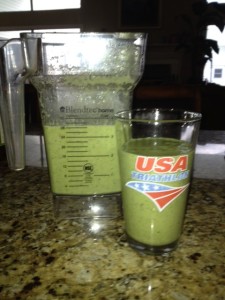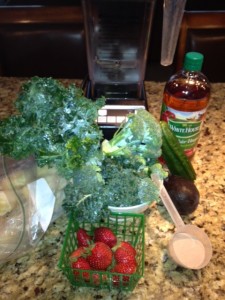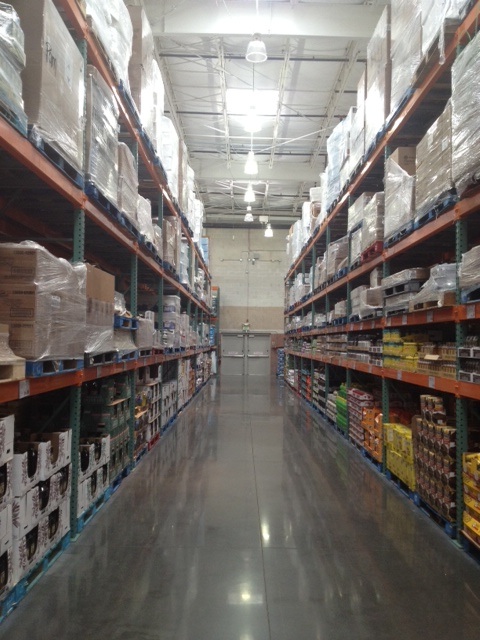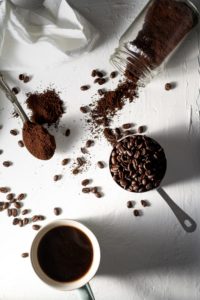
Which could you live longer without: alcohol, caffeine, or meat?
Coming off a 10-day juice cleanse on January 21, 2022, I wanted to see which of the three I could avoid the longest. None of the three were necessary for survival, and giving up one or all of them could have health benefits.
I didn’t expect that I’d still be without one of them one year later. Definitely not caffeine. But here I am, caffeine-free, with no plans to resume using it.
A little background. I hate the taste and smell of coffee, having grown up in a home where my father woke early and began chain-smoking and pounding coffee. My first breath each morning was coffee and cigarettes. I’ve never tried either of them.
We did not have soda in our home, which was not uncommon in the 1970s and ‘80s. I picked up a severe Diet Coke habit in college that continued into my early thirties. But when our first child was born in 2002, I decided I did not want my children to see me drinking diet colas like water. Neither of our children drinks soda regularly.
The idea of a coffee and soda-free guy dropping caffeine might not seem like a big deal. Think again. For 25 years, I relied on drinks and powders that were virtually non-existent until the late ‘90s to fuel my workouts and serve as an everyday substitute for coffee and soda.
First came supplements and drinks laden with ephedrine and caffeine. I covered Major League Baseball as a sportswriter for USA Today in the 1990s and as a freelancer in the early 2000s. I figured if players could use these products to get through long seasons, it could help me with workouts and also the grind of being a baseball writer, which includes the same crazy hours and marathon travel as ballplayers without the compensation and first-class accommodations.
Sports leagues banned ephedrine after it was linked to the deaths of several athletes. I gave it up, too, but like players, I turned to energy drinks or “shots,” along with pre-workout powders that contained, among other things, high doses of caffeine. I train most mornings, but I’d mix a pre-workout drink even on days I did not since it provided mental clarity and alertness.
I was as addicted to these drinks and powders as people who consume coffee daily, which is at an all-time high of 66 percent of American adults. But I worried that these substances, like ephedrine, might have long-term side effects.
One night in November 2019, I had bad chest pains and drove to the hospital. Tests revealed nothing, but it was enough to scare me cold turkey from my daily energy shot (or two) habit. But I still had a daily pre-workout drink routine.
Now that’s gone, too. I don’t feel any less energized or sluggish. Like many bad habits, it’s more the addiction to the routine than the benefit it’s providing. I sleep better, drink more water, and consume more fruit.
It’s funny. I graduated college in 1991 when the workout supplement industry barely existed. Few young adults drank coffee. As hard as this might be for younger people to believe, I can’t recall seeing someone drink coffee during my college years, which I spent mainly in a student newspaper office where we routinely stayed up until 1 a.m. producing the next day’s edition.
There was Jolt Cola, introduced in 1985 with the slogan “all the sugar and twice the caffeine,” but it never was that popular.
What changed? My theory is that as people became less active and food became more processed, providing fewer nutrients, people turned to caffeine for the energy they weren’t getting from exercise and diet. Plus, the percentage of adults smoking cigarettes dropped from 25.5 percent in 1990 to 12.5 percent today. No doubt some of those ex-smokers and would-be smokers substituted caffeine for nicotine.
As recently as the 1980s, people viewed coffee as an old person’s drink. Television commercials of the time featured seniors drinking Maxwell House, Taster’s Choice, and Folgers. Then Starbucks blew up in the early 1990s, attracting a younger demographic. There also was the 1994 debut of the TV show “Friends,” featuring six twenty-somethings and set mostly in a New York coffee shop.
Coffee raises blood pressure and heart rate, making you more awake. Because it’s a stimulant, it’s also habit-forming, which helps explain why so many people say they can’t function until they’ve had their first cup of coffee in the morning.
Many Millennials and Generation Zers, unlike their Gen X counterparts, have grown up drinking coffee, thinking it’s normal. It’s been a drastic shift in 20 years. In 2003, I was in an early morning business meeting at an up-and-coming fitness company with 25 employees, all born in the late ’60s or ‘70s. A visitor asked if there was any coffee available. An awkward pause hung over the room as if the poor guy had requested permission to smoke. Someone ran out for coffee.
These days the company has 4,000 employees over multiple offices, and coffee available everywhere for its still-young staff, now born mostly after 1985.
I don’t miss caffeine, though it’s sneaky. Most chocolate has caffeine. A few months ago, I woke up from minor surgery and took a drink of soda a nurse had provided to settle my stomach. I jolted awake, thinking my non-caffeine streak was over.
Alas, it was just ginger ale.

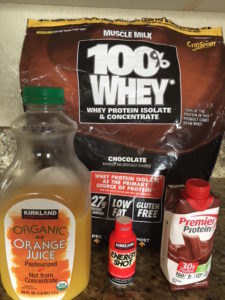 Sugar is America’s No.1 addiction. Even when we’re not consciously eating cane sugar, we’re consuming things loaded with artificial sweeteners, high-fructose corn syrup (HFCS) and other sugar-like chemicals we can’t readily identify on a food label.
Sugar is America’s No.1 addiction. Even when we’re not consciously eating cane sugar, we’re consuming things loaded with artificial sweeteners, high-fructose corn syrup (HFCS) and other sugar-like chemicals we can’t readily identify on a food label.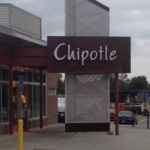 Chipotle Mexican Grill has had a tough 12 months. There were scattered outbreaks of e.coli, salmonella and norovirus. The rapidly-expanding Chipotle, founded in Denver by Steve Ells, in 1993, saw its white-hot stock drop nearly 50 percent.
Chipotle Mexican Grill has had a tough 12 months. There were scattered outbreaks of e.coli, salmonella and norovirus. The rapidly-expanding Chipotle, founded in Denver by Steve Ells, in 1993, saw its white-hot stock drop nearly 50 percent.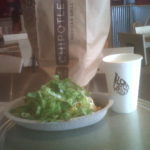 This assumes, of course, that you have use for Chipotle catering for 20. The promotion ends at the end of September and I have an October birthday. Looks like there’s food for the party!
This assumes, of course, that you have use for Chipotle catering for 20. The promotion ends at the end of September and I have an October birthday. Looks like there’s food for the party! COST/VALUE: Chipotle isn’t inexpensive. But it’s a great value. A burrito with water from the soda fountain costs roughly $9. You’re getting nutrient-dense food mostly free of antibiotics and hormones. Eating right is a little more expensive, but always worth it.
COST/VALUE: Chipotle isn’t inexpensive. But it’s a great value. A burrito with water from the soda fountain costs roughly $9. You’re getting nutrient-dense food mostly free of antibiotics and hormones. Eating right is a little more expensive, but always worth it.
